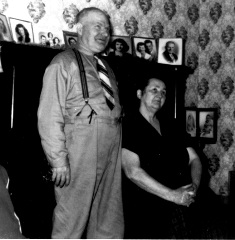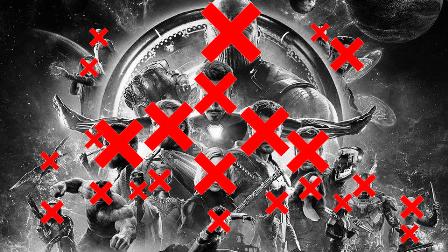Writing with Mortality
Writing with Mortality

My maternal grandparents in 1956
I’m getting older. At 64, I have to step back and examine my life and where I fit in to the legacy of my family. My dad died at 69. My mom at 76. Her mom at 82 and her dad at 66. Mom didn’t see it coming. She was in good health.
I’m in okay health and sometimes I wonder about my ticking clock. I ask myself at night if I accomplished all I needed to in the day to be sure I didn’t waste time or leave important things undone. It is often motivation for my books, to be sure I finish before I die. Mortality.

Life and Death is an issue in Infinity War as she see our superheroes snapped out of existence. Like Spiderman said moments before he disappeared, “I don’t feel so good, Mr. Stark.” The entire idea of suddenly ceasing to exist is made ever more poignant to us old timers when we hear talk of the Avengers moving on and the old actors passing the torch. Truly, Fury, Capt. America, Iron Man, Thor, are all aging in real life. Mortality seems to be an issue for Hollywood (age diversity and discrimination will be for another day), and younger superheroes are waiting in the wings. Just look at what was done with the X Men. Poor Professor X!
Mortality is an issue with our books too. If we write supernatural or paranormal characters we don’t have to worry about their aging. Or if we have to deal with it, it can be done very slowly (like decades slowly), or even used as a plot device if we need to kill off someone or scare everyone with the loss of a favorite character.

But where are the love stories for the over 40? Honestly, I don’t find many adult books, other than Contemporary Fiction/Romance, where the over 40 or 50 group deals with love or loving again. Yes, we find it in younger characters, but we avoid the “older” or the “elderly.”
Gives a girl a complex and makes her think she’s passé. Like all the talk about the older actors being past their prime for their superhero roles, they are made new with younger, more viral, more “viable” contract players. Seems a bit unfair especially if you have superpowers to say that after age “x” that you are too old to do your job.
My job is to write. My job is to write good stories. If I write stories about older people, the younger folks don’t want to read about the 50 year old divorce with three grown children and four grandchildren, her arthritis and her aged mother with diabetes or Alzheimer’s. It’s too….real? Too close to home?
Maybe that’s it. We’re aging and it’s real. It’s contemporary but not the way we want to be remembered? I don’t know. Can you imagine a story about Hawkeye and his family in addition to his fighting Thanos? It’s rumored that we will have something like that in Avengers 4. Why doesn’t that mortality bother us?
What about your stories? Do you write about older people other than wizards and witches and sorcerers and vampires? Can you? Would you? Or is mortality too scary to manage because it is too real and close to home? Like a birthday cake with a heart – a real heart – it frightens and grosses us out. But there is a magic in the reality if we try to see it.

I think about it every day. And I’ve discovered that I am adding older characters to my stories. Yes, some of them have supernatural abilities. And some are mere mortals who have managed to live into their more senior years. I don’t write Young Adult stories so maybe I’m trying to match reality with the imaginary in a way that makes my reality more palatable. Or maybe it makes you think more about your reality and manage it better?
Mortality. The scariest story there is to a writer with a million stories to tell. I’m writing as fast as I can but if I get zapped out of existence, I want my readers to have truth amid the fantasy. I want to read that too. Write more real people. Age them along with you. Let me know that my mortality is okay and that I can be a superhero even with gray hair and eczema or contact lenses.

Maybe the best writing is one that says the greatest superheroes are the best of us, just the way we are, even aged. Just do me a favor? Write faster and leave a legacy that will outlast time (or Thanos).
Mortality. It only matters if you let it take you without a fight. Right Mr. Stark?
Thanks for stopping by.
I remain, Yours Between the Lines,
Sherry
(All credit to Marvel and DC. I do not own rights nor use photos for personal gain).


























